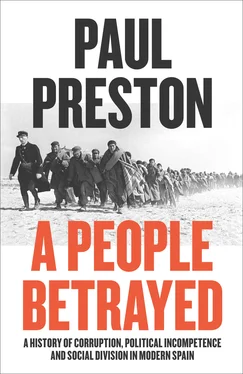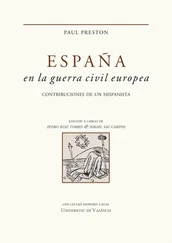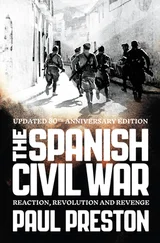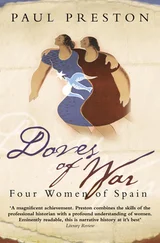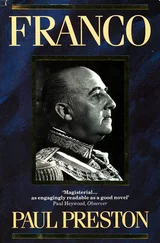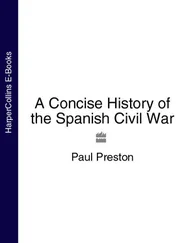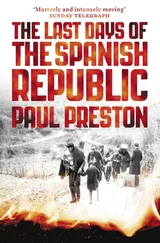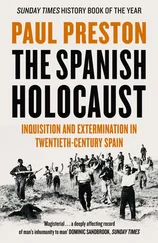1
Spanish Stereotypes? Passion, Violence and Corruption
Spain has often been seen through the myths of national character. One of the most persistent has been that of corruption and dishonesty, which owed much to the numerous translations into other European languages of the first and hugely popular picaresque novels, the anonymous Lazarillo de Tormes (1554) and Francisco de Quevedo’s El buscón ( o Historia de la vida del Buscón, llamado don Pablos; ejemplo de vagamundos y espejo de tacaños ) (written 1604, published 1626). During the eighteenth and nineteenth centuries, Spain was a frequent, and conveniently exotic, setting for operas by foreigners. Among the most extreme examples of operas based on myths of national character, especially Spanish, are almost certainly Mozart’s Don Giovanni , Verdi’s Il trovatore and La forza del destino and Bizet’s Carmen . Artists wishing to portray violent passions drew upon a view of Spain, its history and its people as the embodiment of fanaticism, cruelty and uncontrolled emotion. This image went back to the Reformation, when a series of religiously inspired pamphlets had denounced the activities of the Spanish Inquisition, the Tribunal of the Holy Office and the terrors of the auto-da-fé. Religious hatreds aside, the European perception of Spain was confirmed by the experience of an empire in the Americas, Italy and Flanders built on greed and maintained by blood. The Peninsular Wars, or the wars of national independence, and the subsequent nineteenth-century series of civil wars did nothing to undermine stereotypes which survived into the twentieth century in the literature spawned by the Spanish Civil War.
Collectively, this view of Spain constituted what the Spaniards themselves came to call ‘the black legend’, the most extreme examples of which were collected in the celebrated work by the historian Julián Juderías, La leyenda negra . Combating the notion of universal laziness and violence, Juderías railed against ‘the legend of the inquisitorial, ignorant, fanatical Spain, under the yoke of the clergy, lazy, incapable of figuring among civilized nations today as well as in the past, always ready for violent repressions; enemy of progress and innovations’.1 What Juderías had in mind were definitions of Spain such as that by Sir John Perrot, Elizabeth I’s Lord Deputy of Ireland (1584–6), who observed: ‘This semi-Morisco nation … is sprung from the filth and slime of Africa, the base Ottomans and the rejected Jews.’2 The stereotypes which caused greatest outrage to Spaniards, however, were fundamentally the product of the romantic era. From 1820 to 1850, British and French travellers were drawn to Spain by what they saw as the picturesque savagery of both its landscapes and its inhabitants. Rugged mountains infested by brigands, their paths travelled by convoys of well-armed smugglers, the bloody rituals of the bullfight, the ruins of Moorish palaces and castles, and erotic encounters (probably imagined) with languid olive-skinned beauties became the clichés of romantic literature about Spain. The stereotypes would be maintained even in the 1920s when bar owners in the sleazy Raval district of Barcelona exploited the reputation of the ‘Barrio Chino’ for the benefit of foreign tourists. They would stage ‘spontaneous’ incidents in which ‘gypsies’, apparently inflamed with jealousy by the sight of their women (the waitresses) flirting with the tourists, waved knives, the incidents being settled with rounds of expensive drinks.3
Bizet’s Carmen remains perhaps the most famous ‘Spanish’ opera, largely because of its deployment of most of these Spanish stereotypes. Carmen presents the archetypes of the passionate Andalusian woman, the knife-wielding murderer and the bullfighter set in a context of smugglers, bandits, sex and violence. The notion that the Spaniards were sex-crazed underlay the fact that syphilis was known in France as le mal espagnol . The German writer August Fischer also wrote of the frantic, indeed fanatical, sexuality of Andalusian women – a view shared by Lord Byron, who visited Andalusia in 1809. The French diplomat Jean-François Bourgoing, in his Nouveau voyage en Espagne (1788; expanded in 1803 into the three-volume Tableau de l’Espagne moderne ), complained about the open sensuality of flamenco dancing and excoriated the vice-ridden daily life of gypsies.4 Rather more wistfully, Giacomo Casanova, the Venetian sexual athlete, praised the fandango thus: ‘Everything is represented, from the sigh of desire to the final ecstasy; it is a very history of love. I could not conceive a woman refusing her partner anything after this dance, for it seemed made to stir up the senses.’5
It was Washington Irving’s Tales of the Alhambra (1832) that really put Spain on the map for romantics. A decade later, he was outdone by Théophile Gautier whose Un Voyage en Espagne (1843) described the dusky, flashing-eyed Andalusian beauties who warmed his blood with their flamenco dancing and the blood-chilling gypsy knife fighters and their fancy cutlery.6 English writers like George Borrow ( The Bible in Spain , 1843) and Richard Ford ( Handbook for Spain , 1845, and Gatherings in Spain , 1846) portrayed Spaniards’ alleged obsession with honour, their religious fanaticism, their extremes of love and hate, and the proliferation of lawless cut-throats. This was intensified even more by Alexandre Dumas. Massively famous as a result of the success of The Three Musketeers and The Count of Monte Cristo , Dumas had been invited by the Duc de Montpensier to attend his wedding on 10 October 1846 to the Infanta Luisa Fernanda, daughter of King Fernando VII. Dumas spent two months in Spain on the basis of which he wrote his massive four-volume De Paris à Cadix . Here he described his disgust at Spanish food and at what he saw as the licentiousness and depravity of gypsy dancers in Granada. Yet, in Seville, he was delighted by the voluptuousness of professional flamenco dancers and rejoiced in the flirtations between young army officers and the pretty girls who worked in the great Fábrica de Tabaco.7 Prosper Mérimée’s novella Carmen (1845) concentrated all the romantic clichés about Seville in one personage. A cigarette factory worker, Carmen was also a flamenco dancer, lover of a bullfighter, accomplice of smugglers and bandits, voluptuous, independent, untamed – just the thing to titillate the Parisian bourgeois who seemed to view Spain as a kind of human zoo.8 Mérimée’s patronizingly anthropological attitude to his characters was popularized even further by Bizet’s opera.
A context of readily familiar assumptions about Spain had long since been established by Marie-Catherine Le Jumel de Barneville, Baronne d’Aulnoy. Her Mémoire de la cour d’Espagne (1690), published in English as Memories of the Court of Spain written by an ingenious French lady , was a prurient account of the allegedly syphilis-ridden royal court in Madrid. Uninhibited by the fact that she had almost certainly never visited Spain at all, this armchair fantasist then quickly produced her immensely influential Rélation du voyage d’Espagne , which was first published in 1691 and was regularly reprinted in several languages well into the nineteenth century. Despite claiming to relate ‘nothing but what I have seen’, Madame d’Aulnoy described a country full of exotic animals including monkeys and parrots. Her cast of invented characters was based on other travel books, diplomatic memoirs and the plays of Calderón and other Spanish dramatists. Her wild exaggerations presented corrupt officials, aristocratic men ever ready to kill or die for questions of honour and promiscuous women invariably in the throes of passion.9 Nevertheless, the caricatures created by Madame d’Aulnoy, including the notion that virtually the entire population was afflicted with venereal disease, allowed Bizet to present the insolent and primeval sexuality of Carmen as somehow typically Spanish.10
Читать дальше
